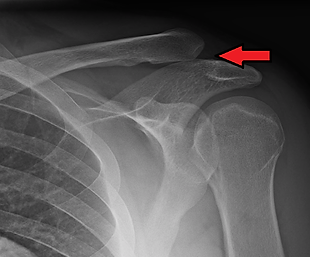Orthopaedic Surgeon
What is a shoulder separation?
We commonly think of the shoulder as the humerus or arm bone and the glenoid or cup portion of the shoulder blade making contact. This is the glenohumeral joint. There is actually another joint where the clavicle or collar bone meets the acromion or another part of the shoulder blade. The acromioclavicle joint is the shoulder joint involved in a shoulder separation.
What causes a shoulder separation?
A shoulder separation is a very common injury. It can occur during contact sports, falls, and even from weight lifting activities. Some people sustain an AC (acromial-clavicular) separation and do not even know it. Most people will notice a bump or a prominence over the shoulder when looking in the mirror.
How are shoulder separations treated?
Most AC separations are treated with rest, physical therapy, and non-surgical treatments. You may benefit from using a sling for a short period of time. In certain situations the clavicle can be so displaced that it limits the function of the shoulder, causes significant pain, and threatens the skin or neurovascular structures. In those cases, the patient may benefit from surgery.
We classify shoulder seperations into 6 types. Types I and II are sprains of the ligaments with minimal dispacement and are usually treated nonoperatively. Types IV, V, and VI are more displaced and severe. They are typically treated with surgery. Type III are similar to type II but the clavicle is more displaced. These are initially treated nonoperatively but may need surgery if symptoms persist.
Shoulder Separation



Anatomy of the Shoulder. Image courtesy of WikiCommons.
Classification system of AC joint separations. Image courtesy of WikiCommons.
Arrow points to a separation of the AC joint on an xray image. Image courtesy of WikiCommons.
References
1. Rios CG, Mazzocca AD. Acromioclavicular Joint Problems in Athletes and New Methods of Management. Clinics in Sports Medicine. 2008;27(4):763-788. doi:10.1016/j.csm.2008.06.006.
